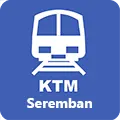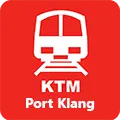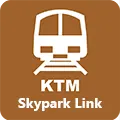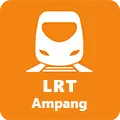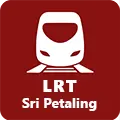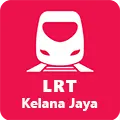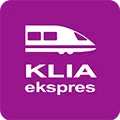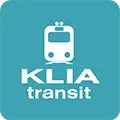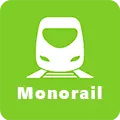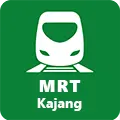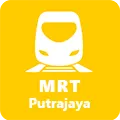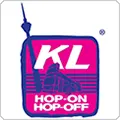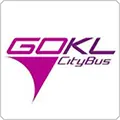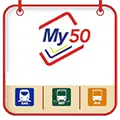MRT Putrajaya Line is the Second line of the KVMRT Project to be developed after the successful completion of First line — ![]() MRT Kajang Line — in July 2017.
MRT Kajang Line — in July 2017.
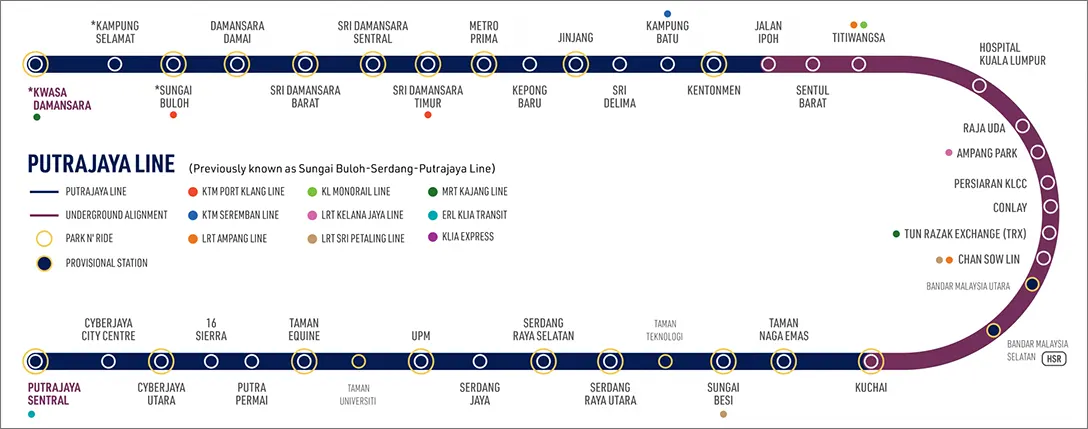
The new MRT Line, totalling 57.7 km in length, includes 5.5 km annexed from the MRT Kajang Line, making it the longest metro line in Malaysia.
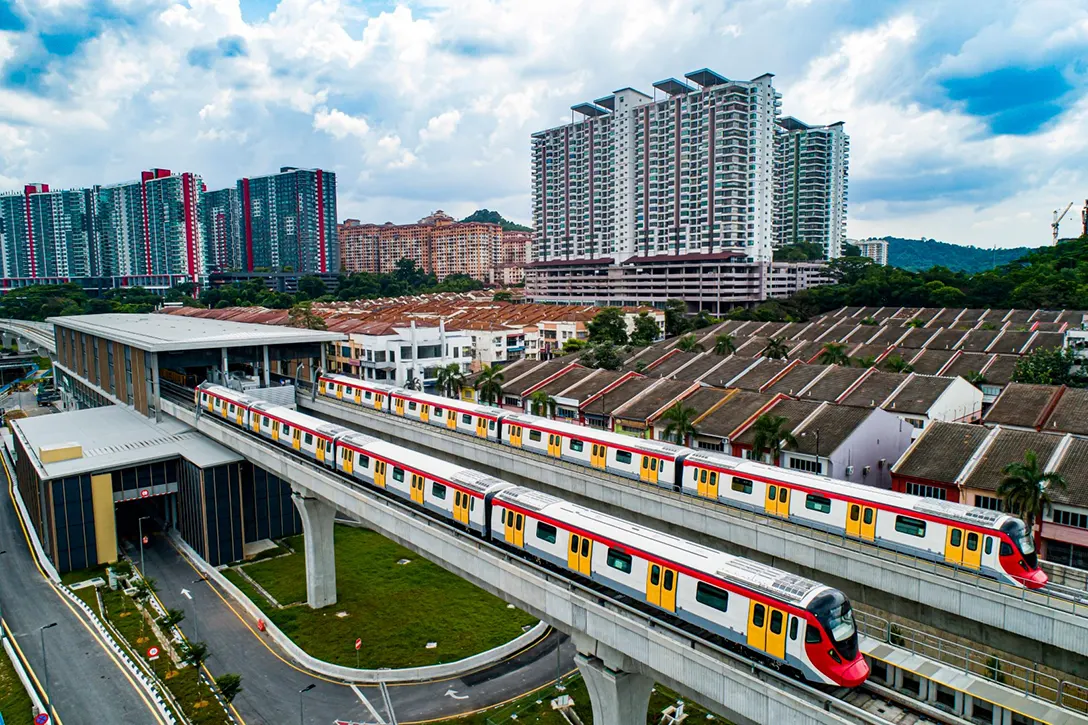
The Prime Minister Dato’ Seri Anwar bin Ibrahim launched the full operations of MRT Putrajaya Line on March 16, 2023.
It is an important part of the larger rail transport system in Kuala Lumpur known as the Greater Kuala Lumpur Integrated Transit System.
The ![]() MRT Putrajaya Line is intended to serve a corridor with a population of around 2 million people stretching from Kwasa Damansara, a new township development in northwest Kuala Lumpur, spanning densely populated areas such as Sri Damansara, Kepong, Batu, Jalan Ipoh, Jalan Sultan Azlan Shah, Jalan Tun Razak, KLCC, Tun Razak Exchange, Kuchai Lama, Seri Kembangan and Cyberjaya, to its southern suburbs, and finally to Putrajaya, Malaysia’s federal administrative centre.
MRT Putrajaya Line is intended to serve a corridor with a population of around 2 million people stretching from Kwasa Damansara, a new township development in northwest Kuala Lumpur, spanning densely populated areas such as Sri Damansara, Kepong, Batu, Jalan Ipoh, Jalan Sultan Azlan Shah, Jalan Tun Razak, KLCC, Tun Razak Exchange, Kuchai Lama, Seri Kembangan and Cyberjaya, to its southern suburbs, and finally to Putrajaya, Malaysia’s federal administrative centre.
The new MRT alignment spans a total length of 57.7km, consisting of 44.2km of elevated tracks and 13.5km running through underground tunnels.
It has 39 operational stations of which 30 are elevated and 9 underground.
A further 5 stations (RRI MRT station, Bandar Malaysia Utara MRT station, Bandar Malaysia Selatan MRT station, Taman Teknologi MRT station, and Tamnan Universiti MRT station) have been provisioned for the future.
It accommodates 10 interchange and connecting stations, making it much easier for commuters to transfer from the Putrajaya Line to existing and future rail lines, including the future Kuala Lumpur – Singapore High Speed Rail.
Of all the 39 operational stations, 17 stations have park and ride facilities, with a total of 6,416 bays available for the convenience of the commuters.
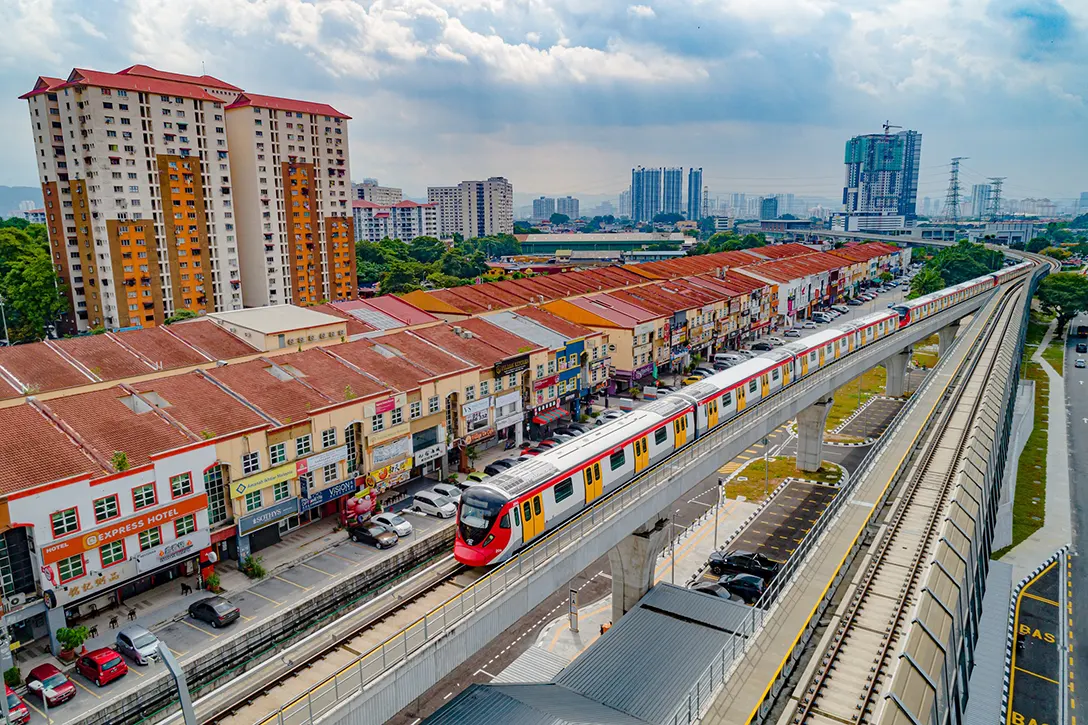
The ground breaking ceremony, which was officiated by then Prime Minister Dato’ Sri Mohd Najib Tun Abdul Razak, was held at the site of the future Putrajaya Sentral Station on 15 September 2016, marking the commencement of construction works of the MRT Putrajaya Line.
Putrajaya Line Phase One operations, stretching from Kwasa Damansara to Kampung Batu was launched by then Prime Minister Dato’ Sri Ismail Sabri Yaakob on 16 June 2022, while the remaining section of the line was launched by Prime Minister Dato’ Seri Anwar bin Ibrahim on 16 March 2023.
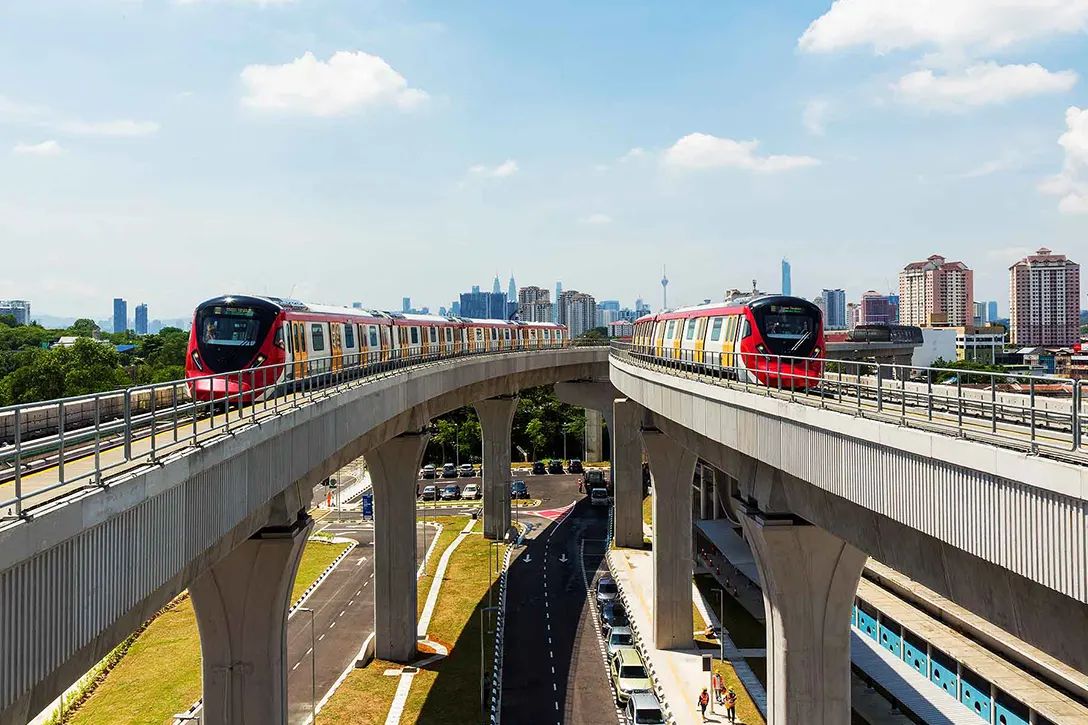
The MRT Putrajaya Line construction cost was reduced by RM8.82 billion from RM39.35 billion to RM30.53 billion, as a result of a cost rationalisation exercise for mega infrastructure projects in 2018.
It is expected to have an initial ridership of over 104,000 passengers daily.
This will further improve the current chronic traffic congestion while significantly increasing the targeted modal share of 40% public transport use within the Greater Kuala Lumpur region.
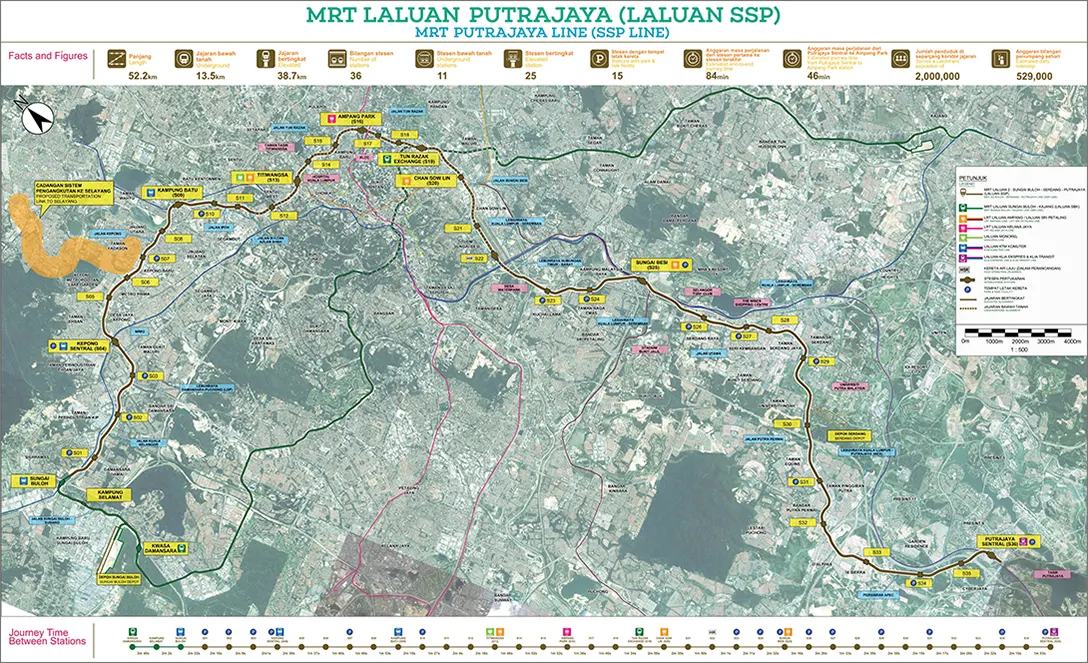
For the MRT Putrajaya Line, the total travel time from PY01 Kwasa Damansara MRT station to PY41 Putrajaya Sentral MRT station (end to end) is estimated to be 85 minutes.
And total time for a trip from PY41 Putrajaya Sentral MRT station to PY20 Ampang Park MRT station is estimated to be 46 minutes.
During peak hours, the frequency between trains is around 4 to 6 minutes, non-peak hours (7-10 minutes) and weekends and public holidays (7-15 minutes).
A total of 6,416 parking bays are available across 17 stations with Park and Ride facility.
MRT users can enjoy a flat rate of RM4.30 if the same Touch ‘n Go card is used for parking and riding the MRT train on the same day.
However, the user will be charged a maximum of RM16.10 if they do not tap their card out by the end of the day.
Standard rates per hour will be applied for non-MRT users, RM3.30 for the first hour and RM1.10 for every subsequent hour. RM16.10 is the maximum charge per day.
Motorcyclists will be charged RM1.10 per daily entry.
MRT Putrajaya Line Phase One stations
The ![]() MRT Putrajaya Line Phase One operations, stretching from Kwasa Damansara to Kampung Batu, was launched by then Prime Minister Dato’ Sri Ismail Sabri Yaakob on June 16, 2022.
MRT Putrajaya Line Phase One operations, stretching from Kwasa Damansara to Kampung Batu, was launched by then Prime Minister Dato’ Sri Ismail Sabri Yaakob on June 16, 2022.
Under the Phase One, the following 12 stations started operating from 3pm on June 16, 2022:
| Stations for MRT Putrajaya Line (Phase One) |
|---|
Of the above 12 stations, the Kwasa Damansara MRT station, Kampung Selamat MRT station and Sungai Buloh MRT station that were originally part of the MRT Kajang Line are now be integrated into the MRT Putrajaya Line.
The MRT Putrajay Line Phase One starts in PY01 Kwasa Damansara where it annexed the section from here to PY04 Sungai Buloh from the MRT Kajang Line.
From Sungai Buloh, the line runs parallel with the KTM Komuter line to KA08 Kepong Sentral / PY08 Sri Damansara Timur.
The MRT then continues towards the towns of PY10 Kepong and PY11 Jinjang. As of the first phase, the Putrajaya Line ends at PY13 Kampung Batu.

All 12 stations are above ground and 8 of them offer Park and Ride facilities.
In terms of interchanges, the Sungai Buloh MRT station and Sri Damansara Timur MRT station are connected to KA08 Sungai Buloh KTM station and KA07 Kepong Sentral KTM station on the KTM Port Klang Line, while the Kampung Batu MRT station is connected to KC03 Kampung Batu KTM station on the KTM Seremban Line.
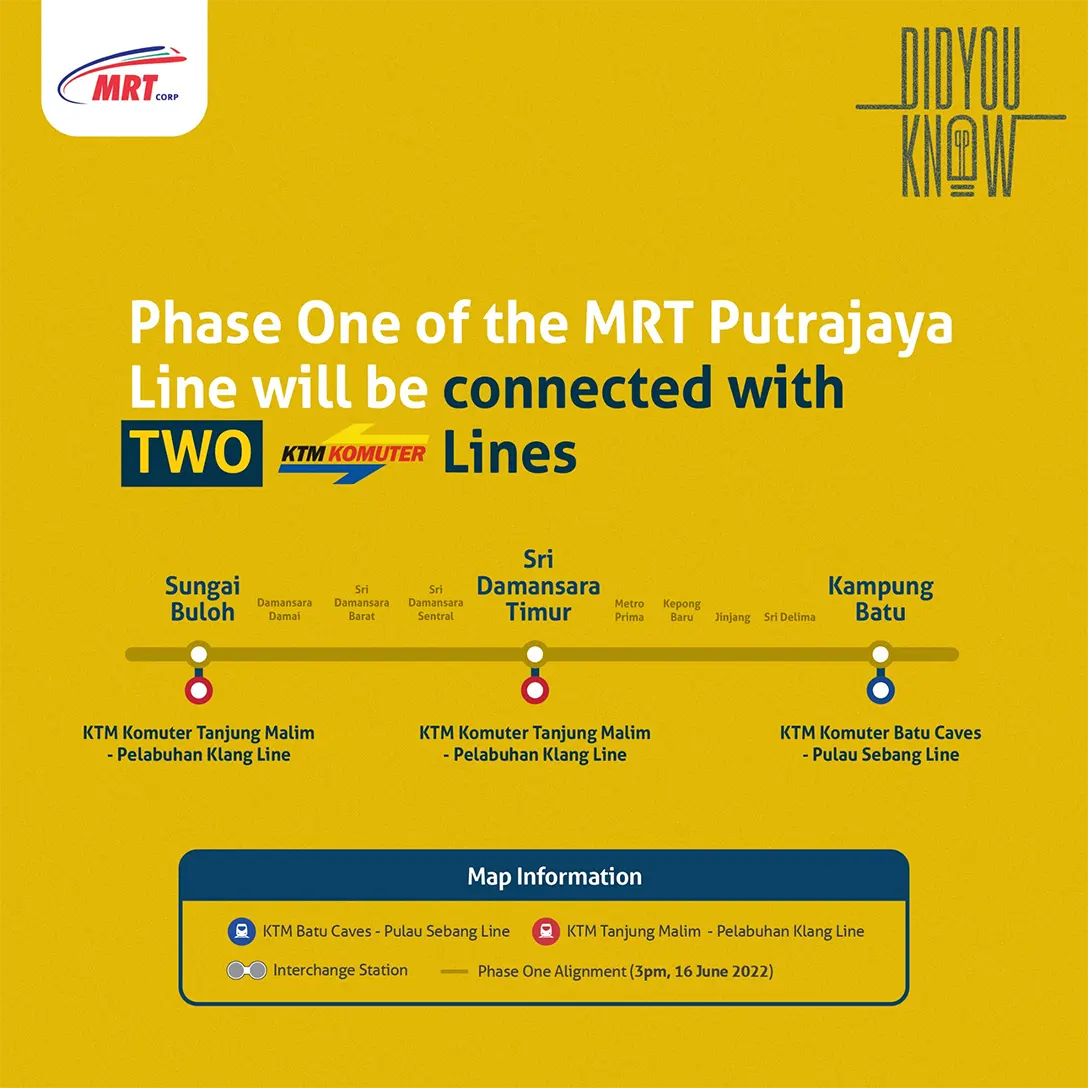
Passengers from ![]() MRT Kajang Line can switch to
MRT Kajang Line can switch to ![]() MRT Putrajaya Line seamlessly with the same level platform at PY01 Kwasa Damansara MRT station.
MRT Putrajaya Line seamlessly with the same level platform at PY01 Kwasa Damansara MRT station.
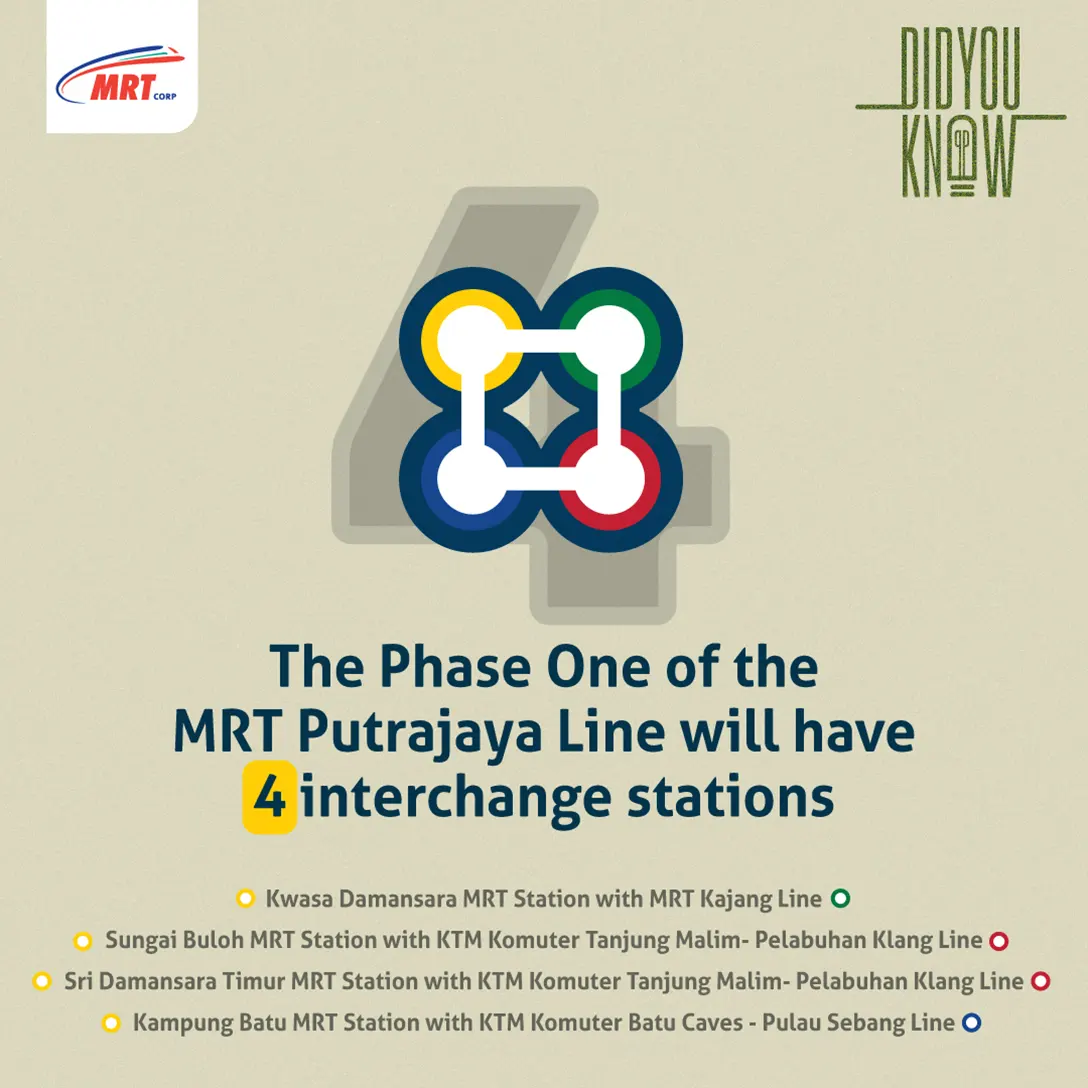
The next interchange between ![]() MRT Kajang Line and
MRT Kajang Line and ![]() MRT Putrajaya Line is at PY23 Tun Razak Exchange (TRX) MRT station, which also allows seamless transfers.
MRT Putrajaya Line is at PY23 Tun Razak Exchange (TRX) MRT station, which also allows seamless transfers.
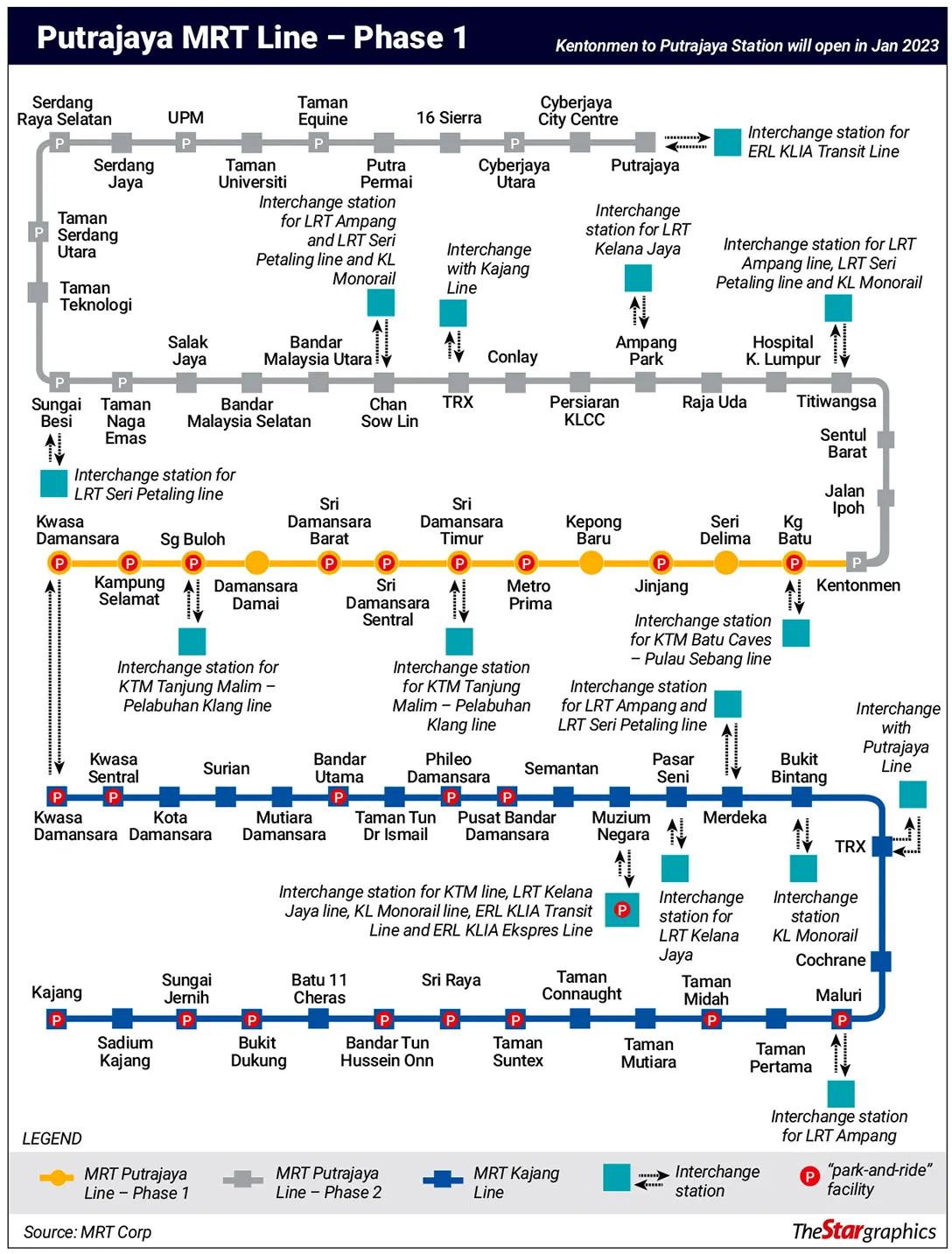
MRT Putrajaya Line Phase Two stations
The Phase Two of ![]() MRT Putrajaya Line, which connects Kampung Batu to Putrajaya, was launched by Prime Minister Dato’ Seri Anwar bin Ibrahim on March 16, 2023.
MRT Putrajaya Line, which connects Kampung Batu to Putrajaya, was launched by Prime Minister Dato’ Seri Anwar bin Ibrahim on March 16, 2023.
The Phase Two operation spans through the heart of Kuala Lumpur city centre with underground stations such as Titiwangsa, Hospital Kuala Lumpur, Ampang Park, Persiaran KLCC and Tun Razak Exchange (TRX).
The stations for the second phase are as below:
| Stations for MRT Putrajaya Line (Phase Two) |
|---|
The second phase of the MRT Putrajaya Line covers 26 stations plus additional 4 provisional stations.
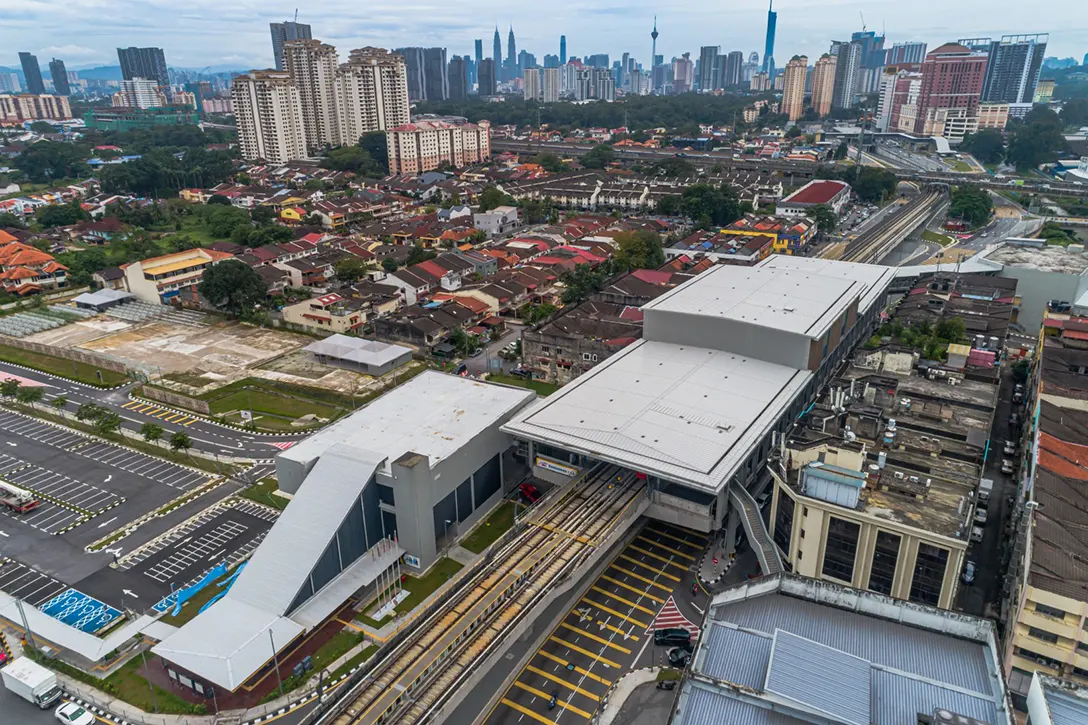
The Phase Two of the MRT Putrajaya Line resumes at PY14 Kentonmen then continues to Jalan Ipoh, it starts going underground while PY15 Jalan Ipoh itself being the only station on the network to be half-sunken/sub-surface.
The line continues under the Jalan Ipoh to PY17 Titiwangsa which will interchange with the LRT Ampang/Sri Petaling lines and KL Monorail line.
The line then runs under the PY18 Hospital Kuala Lumpur and meets the Kelana Jaya Line LRT (also underground) at PY20 Ampang Park.
PY21 Persiaran KLCC serves as a second station in the KLCC subdistrict, itself also served by the Kelana Jaya Line LRT.
The MRT Line continues to PY23 Tun Razak Exchange (TRX), interchanging with the MRT Kajang Line.
It reunites with the Ampang / Sri Petaling line at PY24 Chan Sow Lin.
After thru provisional PY25 Bandar Malaysia Utara station and PY26 Bandar Malaysia Selatan station, it resurfaces at PY27 Kuchai.
Once again, the MRT Putrajaya Line meets with the Sri Petaling Line LRT at PY29 Sungai Besi, then continuing to serve Serdang.
Following this, the line briefly parallels KTM and KLIA Transit (airport express) until PY33 Serdang Raya Selatan, and veers off to PY34 Universiti Putra Malaysia and the Seri Kembangan subdistrict.
The MRT line then enters Sepang constituency, having 3 stops including two in Cyberjaya, before ending at PY41 Putrajaya Sentral, where it interchanges with ![]() KLIA Transit.
KLIA Transit.
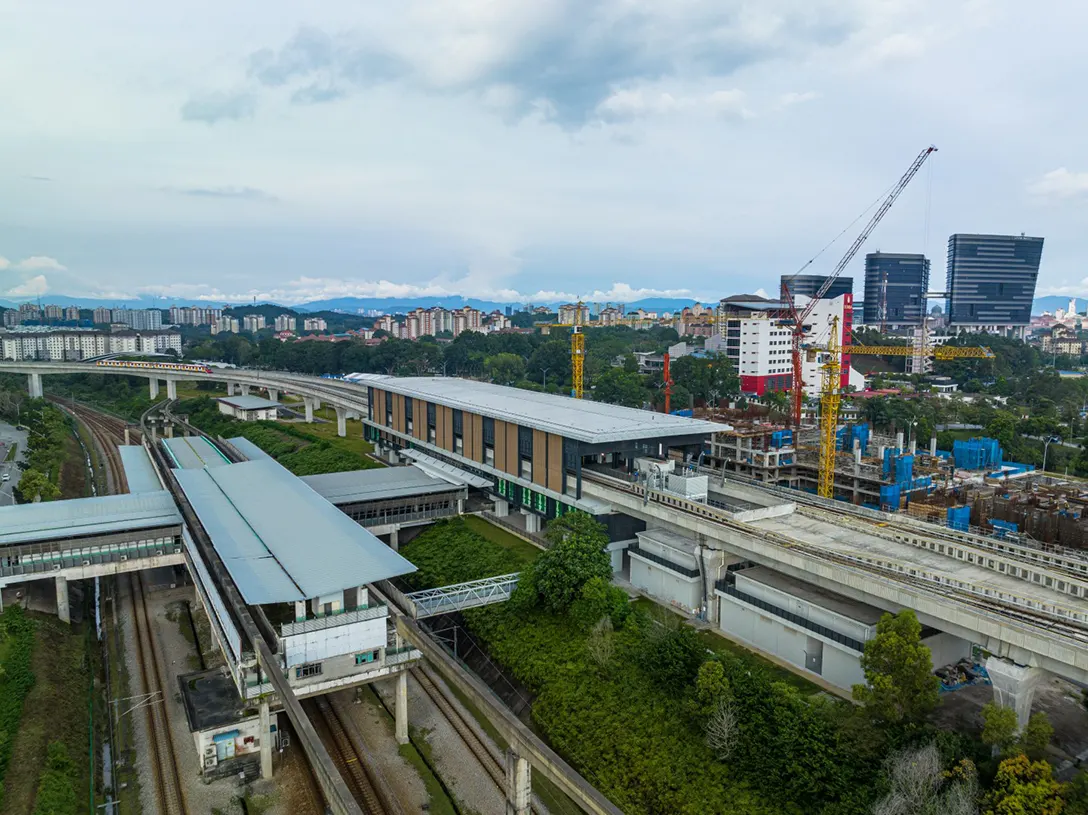
On March 16, 2023, Prime Minister Anwar Ibrahim launched the MRT Putrajaya Line Phase Two operations at the Serdang Depot.
He announced that free rides would be given for the passengers on the new MRT Line effective from 16 March 2023 until 31 March 2023.
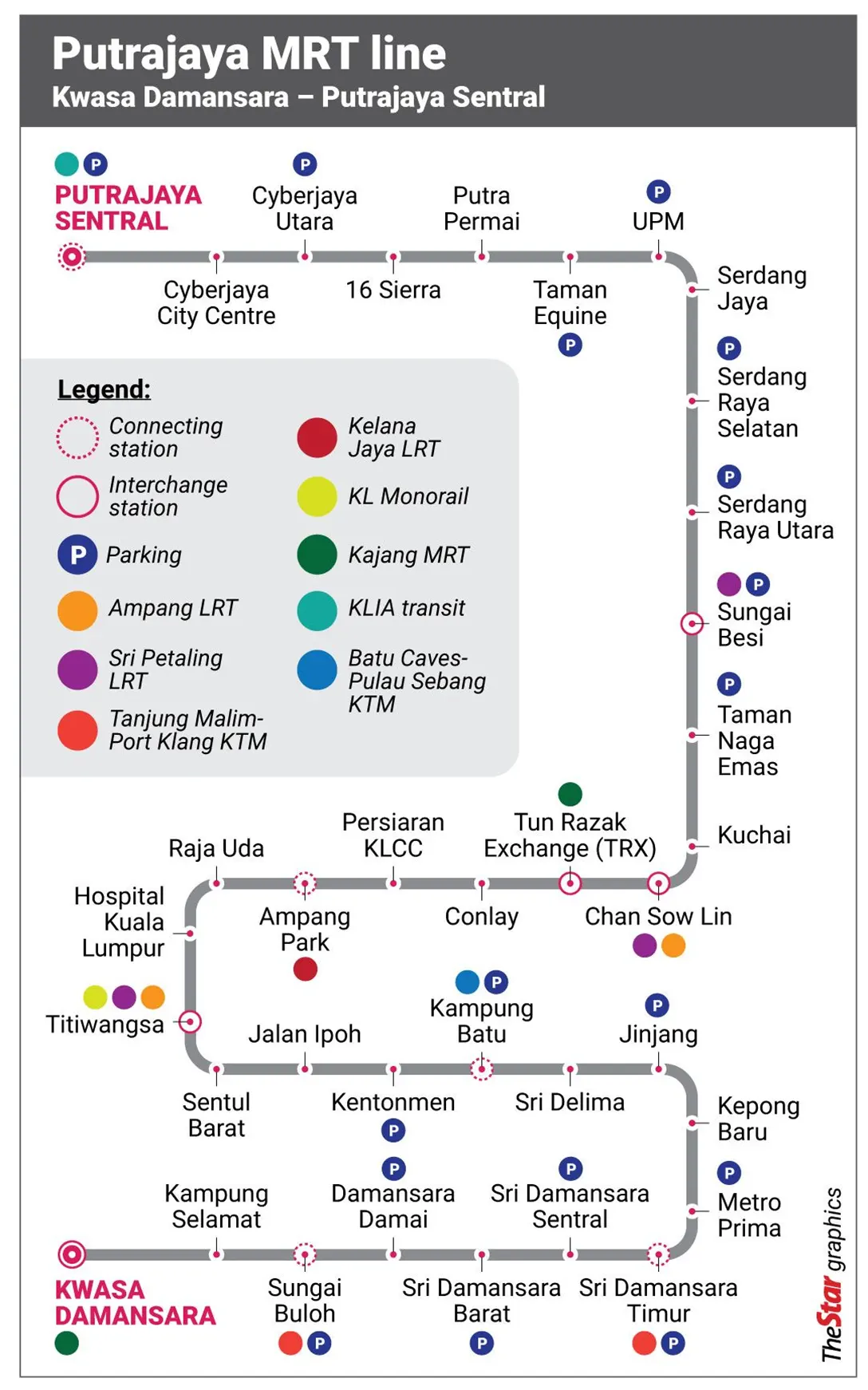
Elevated station concepts
For the ![]() MRT Putrajaya Line, the proposed design for the elevated stations is based on the “Serambi” concept.
MRT Putrajaya Line, the proposed design for the elevated stations is based on the “Serambi” concept.
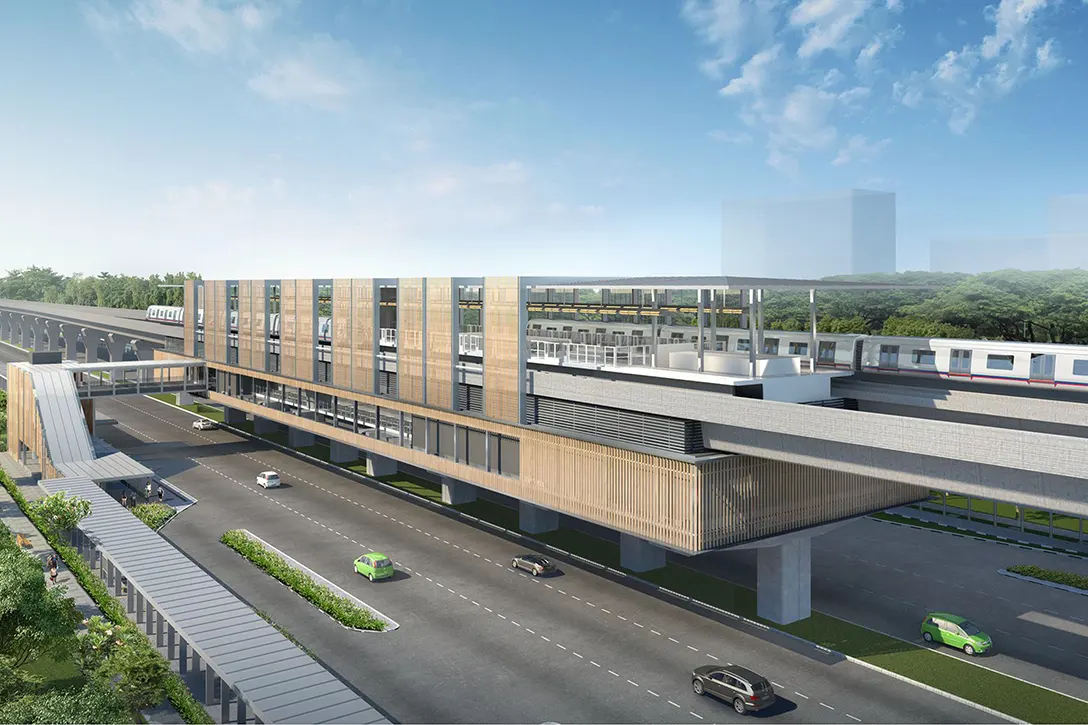
This concept is focused on the inspiring interaction and communication at a foyer or entrance space of a house such as the entrance space at a traditional “rumah kampung” or “rumah panjang”.
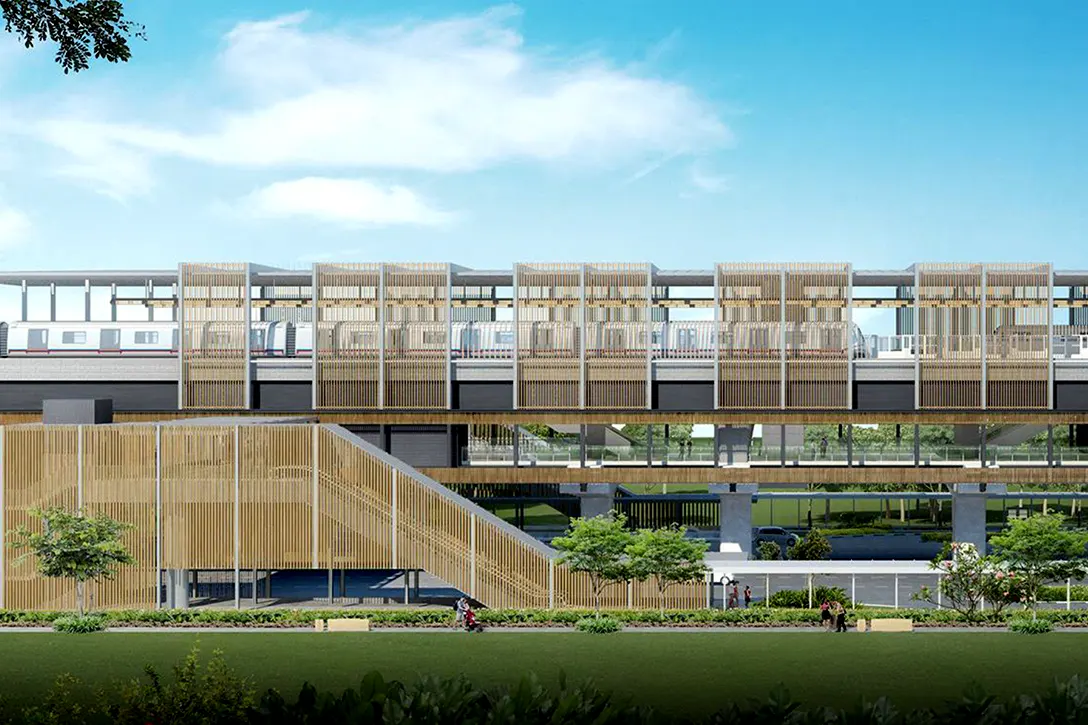
The design opted is a simple and timeless design, which is derived from various design concepts, including that of the Japanese “Zen” concept.
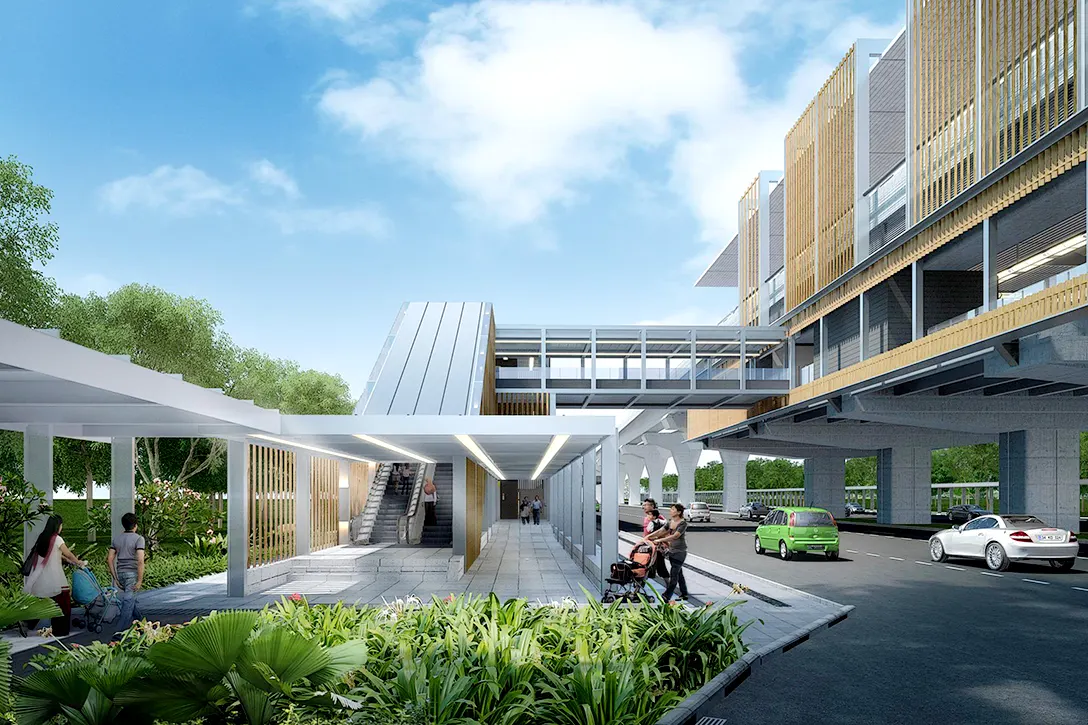
Other aspects include open space, natural lighting and ventilation, and natural visual effects via play of lighting and shadows.
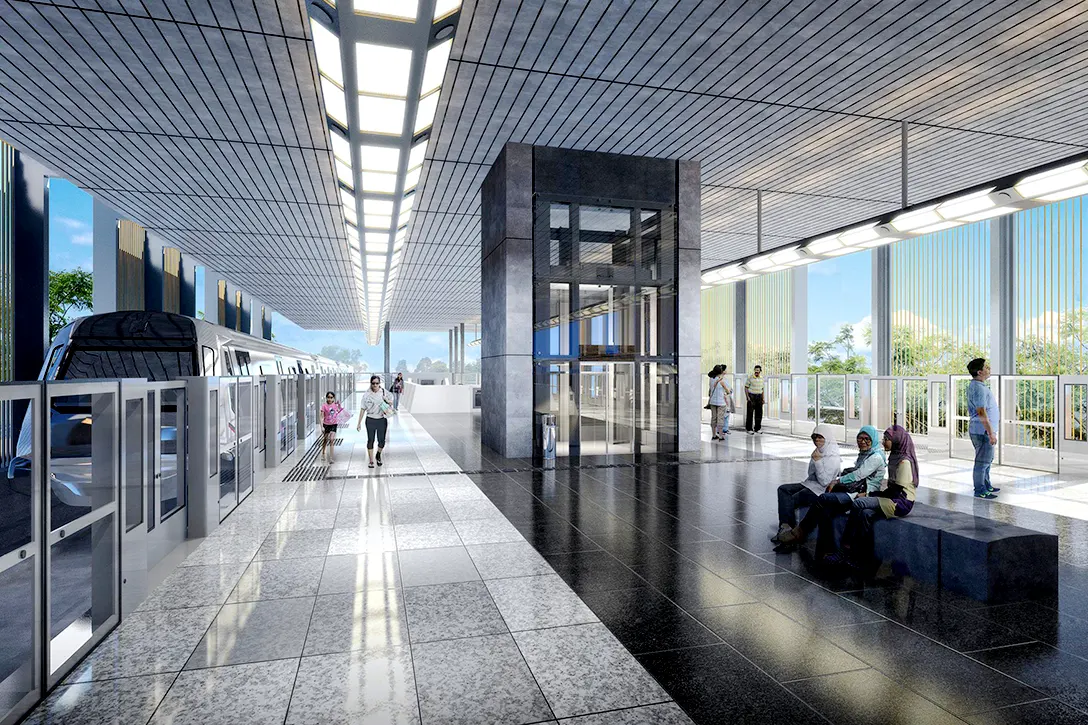
Compared to the elevated station design on the MRT Kajang Line, the columns have been pushed to the sides of the station, giving the stations an open and airy feel.
Underground station concepts
The underground stations are designed to be spacious, comfortable, and accessible for all passengers.
They are equipped with various facilities such as escalators, lifts, toilets, ticket vending machines, customer service centres, and emergency exits.
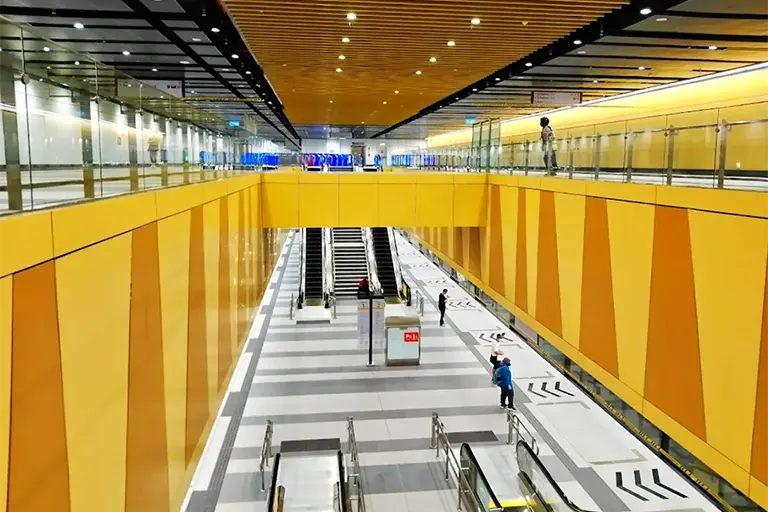
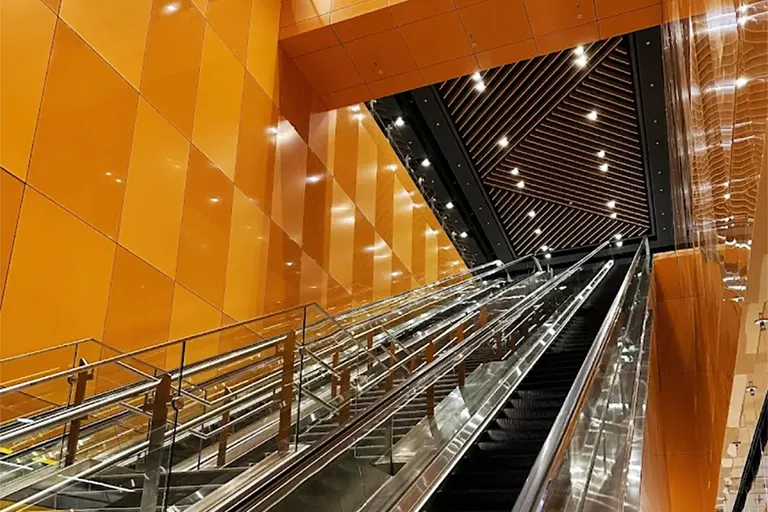
The underground stations also feature artworks by local artists that showcase the cultural diversity and heritage of Malaysia.
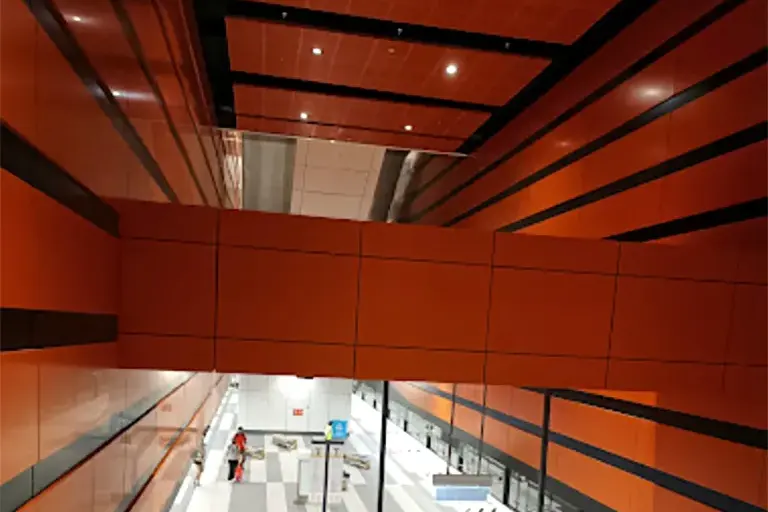
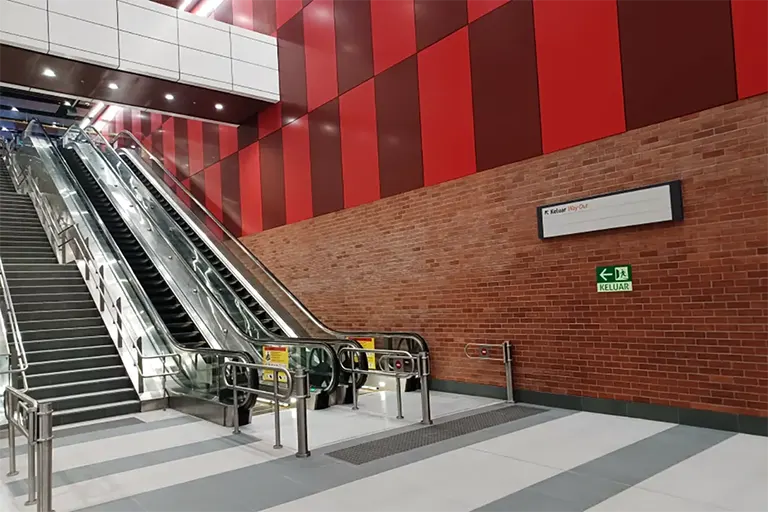
For the MRT Putrajaya Line, each of the underground stations will carry its own individual theme, similar to that of the MRT Kajang Line underground stations.
The proposed designs range from preserving the rustic, reflecting tidal rhythm, promoting well-being, vibrancy, pulse of life, discovering culture, molding forms, inspired by nature to streamlined flow.
Some of the design themes are as follow:
- Bandar Malaysia Utara: Preserving a traditional rustic feel with timber elements and earthy tones.
- Merdeka: Reflecting tidal rhythms with wave-like structures and blue lighting.
- Bukit Bintang: Promoting well-being, vibrancy, and pulse of life with dynamic shapes and colours.
- Tun Razak Exchange (TRX): Discovering culture with geometric patterns and motifs inspired by Malay art and architecture.
- Chan Sow Lin: Moulding forms inspired by nature with organic curves and green accents.
Trains & rolling stock
Unlike the MRT Kajang Line which uses Siemens Inspiro train sets, the MRT Putrajaya Line uses Hyundai-Rotem train sets that come with a distinctive duck face design in red.
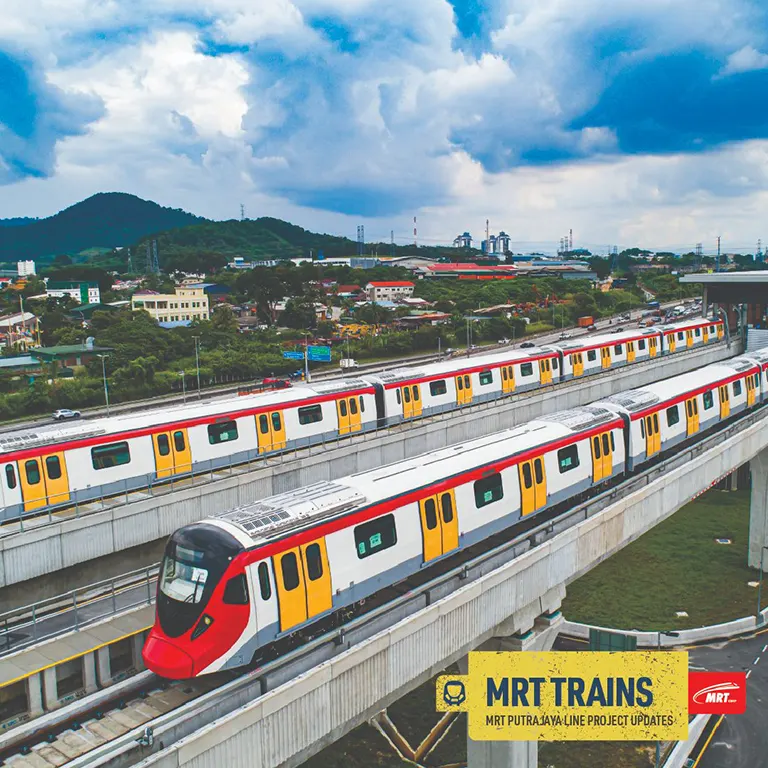
The new MRT Line will have a total of 49 driverless train sets consisting of four cars with a maximum capacity of 1,204 passengers per train.
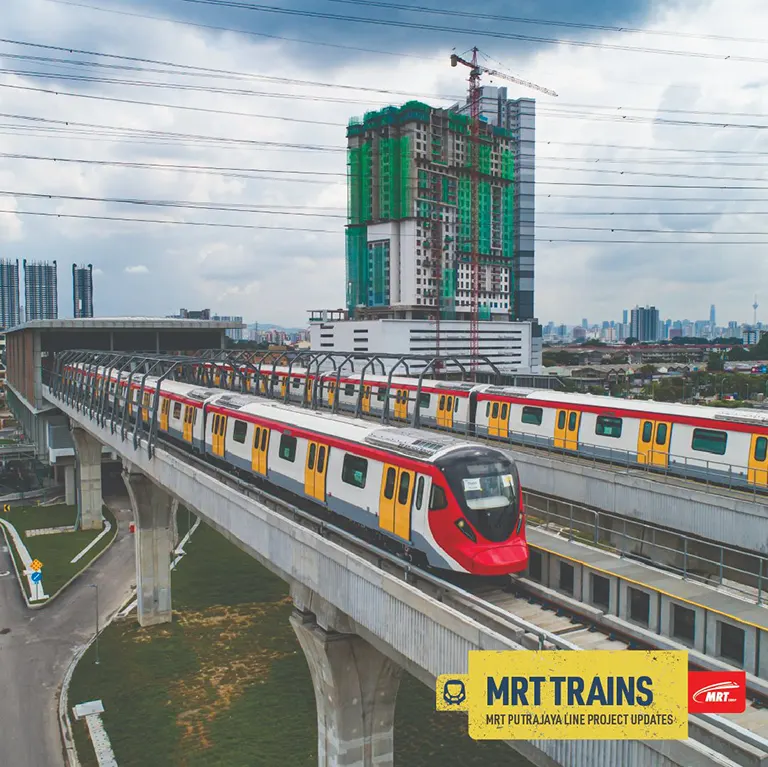
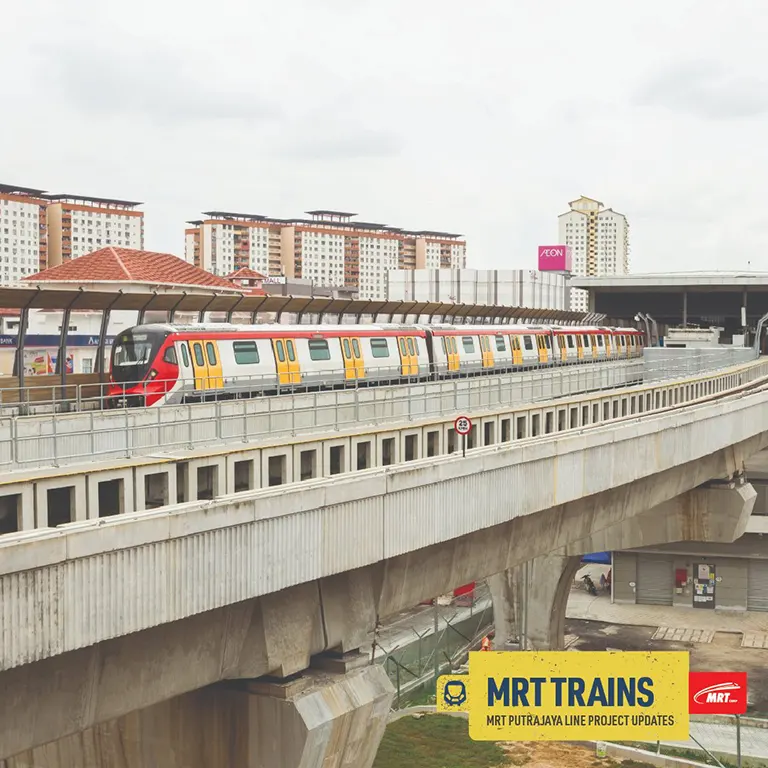
The trains have a maximum speed of 100km/h and they will operate with a frequency of 3.5 minutes during peak hours.

Exterior design
The train’s exterior image takes into consideration the specific view of the train when entering the station and along the platform.

The colour livery strongly emphasises the powerful expression of the front-end style.
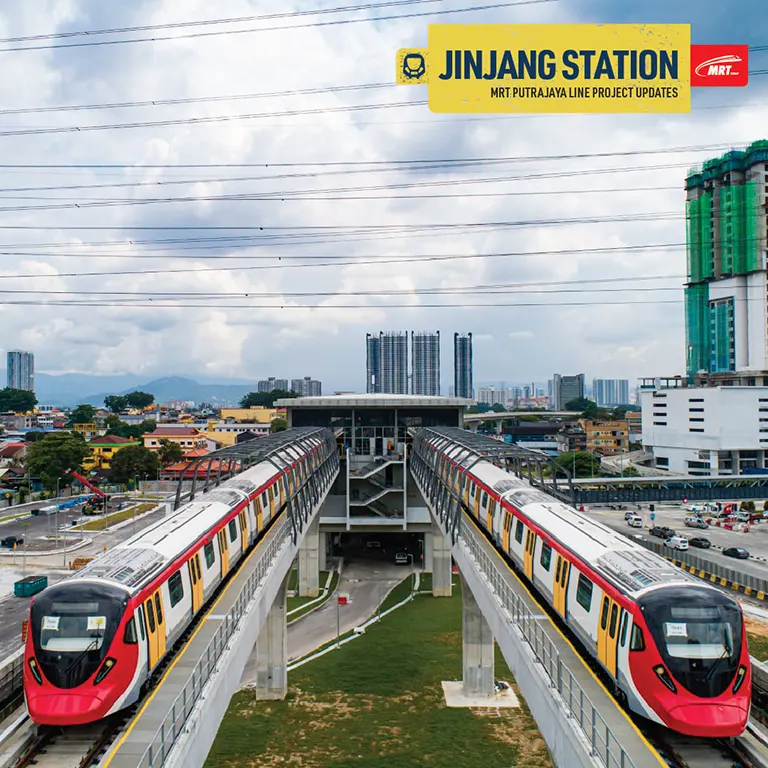
The front-end mask is made of strongly structured shapes and volumes, expressing decision, safety and confidence.
Interior design
The gangway area is wide and open for easy circulation as well as using the latest generation to offer the sensation of uninterrupted passenger area all through the train.
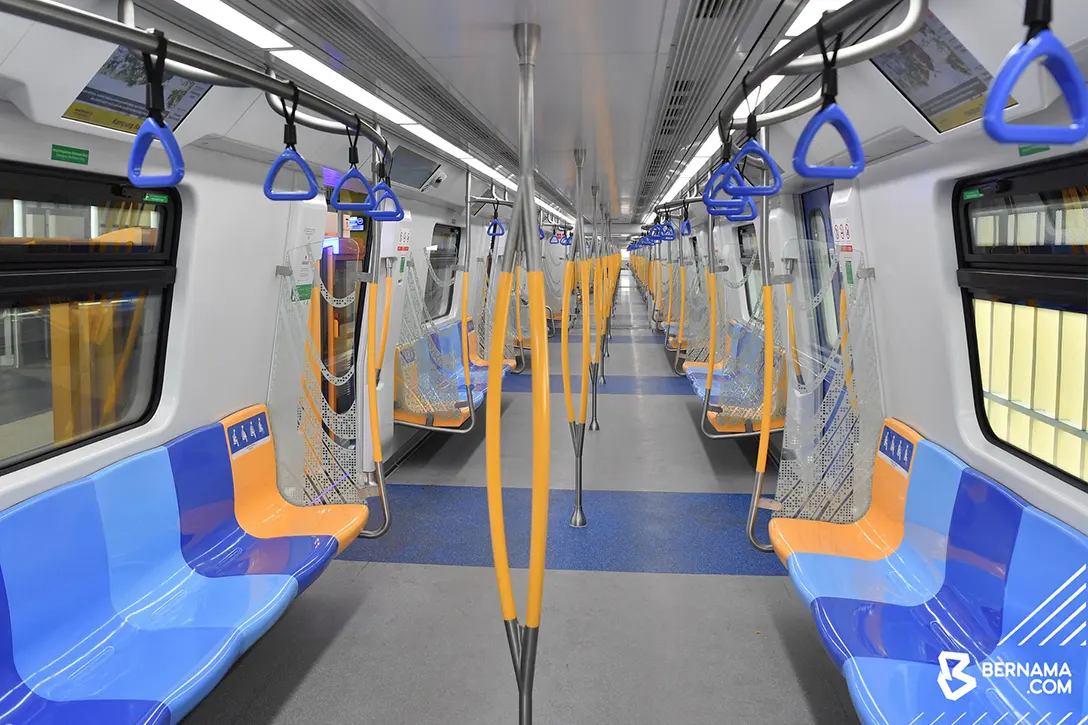
Handrails and grab handles are located at altitudes compatible for reach and comfort of all passengers.
The seats are in assortment of blue colours to bring visual animation and echoes the Putrajaya lake surroundings.
The draught screens are straightforward, no-nonsense for optimised traveller protection and their lightly tinted glass are of contrasting clear pattern for subtlety.
The ceiling pattern makes use of subtle graphic effects of matte and shine.
The grab poles and rails bear a sharply contrasting yet matching colour for better visibility.
All trains are equipped with live closed circuit television cameras that are connected to a control centre for surveillance.
Greater Kuala Lumpur / Klang Valley Integrated Transit System
What is the role of ![]() MRT Putrajaya line in the Greater Kuala Lumpur / Klang Valley Integrated Transit System?
MRT Putrajaya line in the Greater Kuala Lumpur / Klang Valley Integrated Transit System?
For better visualization of MRT Putrajaya line in the integrated system, please review Line 12 – MRT Putrajaya line on the following integrated transit map.
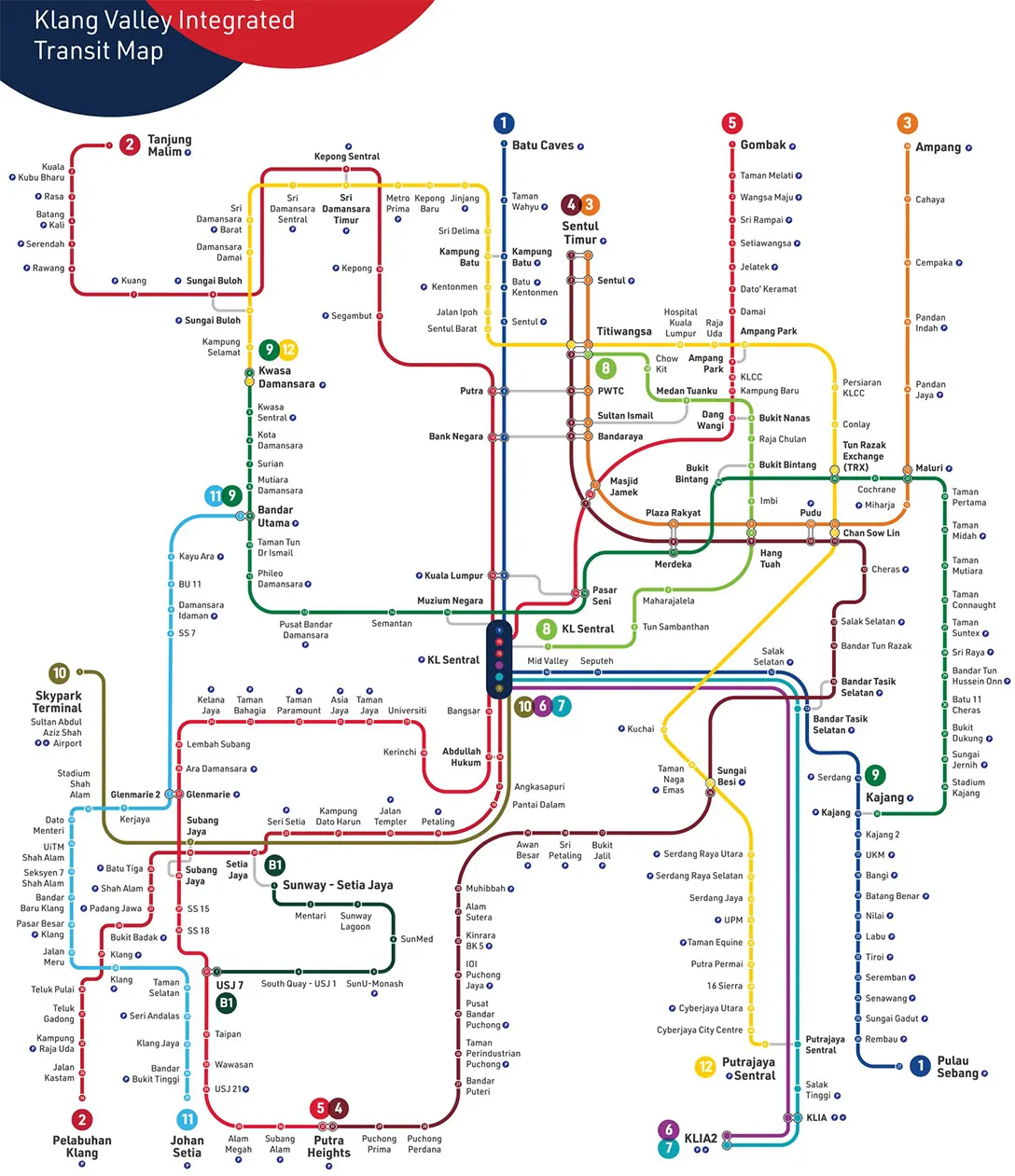
The Klang Valley Integrated Transit System consists of the following rail systems that operate seamlessly together for the comfort and convenience of the commuters:
Site Search
Did you find what you are looking for? Try out the enhanced Google Search:
